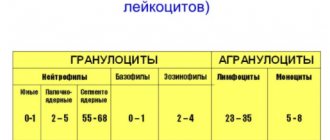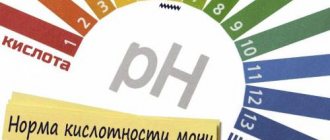5 / 5 ( 4 voices)
To assess the performance of a continuously running human “engine,” many quantitative indicators are taken into account. Among them are cardiac output (CO) and cardiac ejection fraction (CEF).
The norm of these values and comparison with them of the values measured in a particular patient allow the doctor to obtain an objective idea of the functional reserves of the “pumping” function of the myocardium and the existing pathologies in his cardiovascular system.
VS and FVS are some of the parameters of cardiovascular hemodynamics that affect blood pressure
The information, photos and videos in this article will help the average person understand the essence of these parameters, how they are measured, what affects the indicators of VS and FVS, and whether modern medicine can influence the body to normalize these values.
Current situation
Due to the increase in life expectancy among the elderly, the prevalence of cardiac pathology in this group is increasing, especially with impaired ejection fraction.
In recent years, proven methods of drug treatment and the use of resynchronization devices and a cardioverter-defibrillator have been developed, which prolong life and improve its quality in patients with this pathology. However, methods for treating heart pathology with a normal fraction have not been determined; treatment of this pathology remains empirical. There are also no proven methods for treating acute forms of cardiac decompensation (pulmonary edema). Until now, the main drugs in the treatment of this condition are diuretics, oxygen and nitro drugs. The ejection fraction of the heart, its norm, its pathology, require a serious approach to the problem.
You can visualize the heart muscle and determine the functioning of the heart chambers (atria, ventricles) using Doppler cardiography. To understand how the heart works, its ability to contract (systolic function) and relax (diastolic function) of the myocardium is examined.
Are clinical manifestations of impaired contractility possible?
Changes in myocardial contractility are not isolated, and, as a rule, are accompanied by one or another myocardial pathology. Therefore, among the patient’s clinical symptoms, those that are characteristic of a specific pathology are noted. Thus, with acute myocardial infarction, intense pain in the heart region is observed, with myocarditis and cardiosclerosis - shortness of breath, and with increasing systolic dysfunction of the LV - edema. Heart rhythm disturbances (usually atrial fibrillation and ventricular extrasystole) are common, as well as syncope (fainting) conditions caused by low cardiac output and, as a consequence, low blood flow to the brain.
Concepts and symptoms
Ejection fraction is an indicator that determines the efficiency of the muscles of the heart organ at the moment of impact. It is measured as the percentage of blood volume entering the vessels during ventricular systole. For example, if there is 100 ml, 65 ml enters the vascular system, so the cardiac output will be 65%.
Ejection fraction is not prescribed to all patients, but only to those who complain of:
- pain in the chest;
- systematic interruptions in the work of the organ;
- tachycardia;
- dyspnea;
- frequent dizziness and fainting;
- swelling of the lower extremities;
- fatigue and weakness;
- decreased productivity.
Typically, the first test is an electrocardiogram and ultrasound. These tests help determine the extent to which cardiac output occurs in both the left and right ventricles. Diagnostics are low cost, highly informative, and there is no specific training. The accessibility of the procedure is due to the fact that any ultrasound equipment can provide data on the fraction.
What it is
EF is considered a common indicator that an ultrasound machine can provide. These data indicate the quality of the heart during contraction. During the entire process, the volume of blood that has left the left ventricle into the vascular bed is measured and removed as a percentage.
The measurement is taken in the left ventricle, from here the blood goes into the systemic circulation. When the indicator decreases, this indicates that the heart cannot contract at full strength and there is a lack of blood volume in the body. For minor violations, this situation can be corrected with medication .
Typically, studies are prescribed when the patient complains of shortness of breath, tachycardia, dizziness, fainting, fatigue, pain in the heart or behind the sternum, swelling of the extremities. A biochemical blood test and an electrocardiogram are initially indicated.
Sometimes, for a complete picture, Holter monitoring, bicycle ergometry or ultrasound are performed.
Faction values
The cardiac ejection fraction, the norm of which is discussed below, is the main instrumental indicator that characterizes the strength of the heart muscle.
Ejection fraction values obtained by Doppler cardiography:
- Normal values are greater than or equal to 55%.
- Slight deviation - 45-54%.
- Moderate deviation - 30-44%.
- The pronounced deviation is less than 30%.
If this figure is less than 40%, the “heart strength” is reduced. Normal values are above 50%, “heart strength” is good. There is a “gray zone” of 40-50%.
Heart failure is a set of clinical manifestations, biochemical markers, research data (electrocardiography, Dopplerography of the heart, X-ray of the lungs), which occur when the force of contraction of the heart decreases.
There are symptomatic and asymptomatic, systolic and diastolic heart failure.
How is the emission rate calculated?
There is a calculation formula. To do this, stroke volume is multiplied by heart rate. This is how you get the desired value. The result will tell you how much volume is pushed out in one minute. In general, the normal figure should be approximately 5.5 liters.
Formulas for calculating ejection fraction
In medicine, they also use special programs that automatically calculate the fraction. For this, the Teicholz formula and Simpson method are used. Moreover, the data for these two calculations may differ by an average of 10%.
EF should be within 50-60%; the Simpson norm suggests that the lower limit should not be less than 45%, and Teicholz 55%.
The Teicholz formula uses systolic and diastolic volume and left ventricular size. A small part of the latter is involved in the study.
The overall length does not matter.
Typically, the study is carried out on old equipment and in the presence of areas with impaired local contractility (for example, in the case of ischemia), the Teicholz formula may fail and give an unclear result.
To obtain the EF indicator, the volume of shortening is multiplied by a factor of 1.7. The op-amp is obtained from the formula ((KDD - KSD)/KDD)*100%. Where EDD is the end diastolic diameter, ESD is the end systolic diameter.
Simpson's formula is more modern; it accurately shows all significant zones of the myocardium, taking into account the geometry of the ventricle and the presence of zones with impaired local contractility through the apical 4- and 2-chamber section.
The Simpson method involves dividing the left ventricular cavity into thin disks and determining their boundaries. The outlined systole and diastole are visible along the contour of the cardinal surface of the ventricle; from these data, an estimate of the ejection volume can be made.
Normal fraction emission
Healthy ejection fraction and pathological (less than 45%)
Ejection fraction (EF) has important diagnostic value, as it allows assessing the systolic function of the LV and right ventricles. Ejection fraction is the percentage of blood volume that is expelled into the vessels from the right and left ventricles during systole. If, for example, from 100 ml of blood 65 ml of blood entered the vessels, as a percentage this will be 65%.
Left ventricle. The normal left ventricular ejection fraction for men is ≥ 52%, for women – ≥ 54%. In addition to the LV ejection fraction, the LV shortening fraction is also determined, which reflects the state of its pumping (contractile) function. The norm for the shortening fraction (SF) of the left ventricle is ≥ 25%.
Right ventricle. The normal ejection fraction for the right ventricle (RV) is ≥ 45%.
Heart ejection
Cardiac output is the total volume of blood flowing from the heart into the great vessels over a certain period of time or the volumetric velocity of blood flow. Typically, the time unit is equal to 1 minute, so among doctors the term “Minute Volume of Blood Circulation” or its abbreviation “MOC” is more often used.
Factors influencing the value of cardiac output
Myocardial hypertrophy leads to a loss of its elasticity and a decrease in the volume of the chambers
Cardiac output depends on:
- age and anthropometric indicators;
- human condition – rest (preload), after physical activity, psycho-emotional background;
- the frequency of myocardial contractions and its qualitative characteristics - stroke or systolic blood volume (SVV) flowing from the left ventricle into the aorta, and from the right ventricle into the pulmonary artery, during their contraction;
- the value of “venous return” - the blood volume flowing into the right atrium from the superior and inferior vena cava, into which blood from the whole body collects;
- dimensions of the thickness of the muscle wall and the volume of the heart chambers (see in the figure above).
For your information. The BC parameter is also influenced by specific indicators of the pumping (contractile) ability of the cardiac apparatus and the current state of the general resistance to blood flow of the system of peripheral blood vessels of the general circulation.
Reference values and standard assessment parameters
Blood ejection from the heart: the norm of the Cardiac Index, depending on age-related changes in anthropometric data
Today it is quite easy to find out the exact indicators of cardiac hemodynamics. Most of them are calculated by a computer program during a non-invasive echocardiographic ultrasound examination.
The procedure can be done free of charge in a public clinic, performed in a private medical institution or laboratory, and even by calling a specialist with a portable device to your home. The price of the examination ranges from 700 to 6,500 rubles, and depends on the class of equipment.
To determine the value of BC, the Bremser-Ranke formula is used
There are other methods for determining VS and SWS - according to Fick, thermodilution, left ventriculography, Starr's formula. Their implementation is invasive, so they are used in cardiac surgery. A description of their essence will be understandable only to specialists, but for the average person we will clarify that they are intended to monitor the state of the cardiovascular system during operations, monitor the condition of a patient in intensive care, but some are sometimes performed to make an accurate diagnosis.
Whatever methods of measuring VS are used, its reference values in a healthy adult who is in physical rest and psycho-emotional balance are fixed in the range from 4 to 6 l/min, while in one contraction from the left ventricle into the aorta 60 to 100 are pushed ml of blood. Such indicators are considered optimal provided that the heart beats at a speed of 60-90 beats/min, the upper pressure was in the range from 105 to 155, and the lower pressure was from 55 to 95 mm Hg. Art.
On a note. Unfortunately, echocardiography is not always enough to clarify a cardiac diagnosis. In addition to it, the doctor may prescribe CT tomography, PhonoCG, EPI, CT coronary angiography, and radionuclide diagnostics.
Cardiac output syndromes
A decrease in VS occurs due to a decrease in the speed and volume of “venous outflow”, as well as a violation of myocardial contractility.
Excessive thinness leads to disruption of hemodynamic parameters of the cardiovascular system
The causes of low cardiac output syndrome include:
- Diseases or conditions caused by cardiac origin or complications after cardiac surgery:
- bradyarrhythmia, tachyarrhythmia;
- myocarditis;
- heart valve defects;
- end-stage congestive heart failure;
- metabolic disorders in the myocardium;
- occlusion of a shunt or main vessel;
- decreased blood volume;
- accumulation of air in the pleural cavity and compression of the lobes of the lungs;
- accumulation of fluid between the layers of the pericardium;
- oxygen starvation of the myocardium;
- a shift in the body’s acid-base balance towards increasing acidity (decreasing pH);
- sepsis;
- cardiogenic shock.
- Non-cardiac processes:
- massive blood loss;
- extensive burn;
- decreased nervous stimulation of the heart;
- sudden dilatation of veins;
- obstruction of large veins;
- anemia;
- carbon dioxide poisoning.
On a note. Aging of the body, prolonged physical inactivity, fasting, and diets that lead to a decrease in skeletal muscle volume cause persistent low cardiac output syndrome.
Heart volumes in athletes
High BC is an adequate reaction of the heart in response to physical or psycho-emotional stress. The heart of a marathon athlete is capable of working at its maximum limit - with an increase in venous return and cardiac output by 2.5 times, pumping up to 40 liters per minute.
If the BC indicator is elevated at rest, then this may be a consequence of:
- the initial stage of hypertrophy of the heart walls - “athlete’s heart”;
- thyrotoxicosis;
- arteriovenous fistulas;
- chronic mitral and aortic insufficiency with left ventricular overload;
- low hemoglobin;
- beriberi diseases (vitaminosis B1);
- Paget's pathology (deforming osteodystrophy).
For your information. The increased load on the cardiovascular system during pregnancy causes an increase in CV, which returns to normal after childbirth.
Relevance of the problem
Over the past 20 years, the incidence of heart failure among Europeans has been decreasing. But the number of cases in the middle and older groups of the population is increasing due to increasing life expectancy.
According to European studies (ECHOCG), a decrease in ejection fraction was found in half of patients with symptomatic heart failure and in half of asymptomatic patients.
Patients with heart failure are less able to work, their quality of life and its duration are reduced.
Treatment of these patients is the most expensive for both them and the state. Therefore, the search for ways to prevent the occurrence, early diagnosis and effective treatment of heart disease remains relevant.
Studies conducted in recent decades have proven the effectiveness of a number of groups of drugs to improve the prognosis and reduce mortality in patients with low cardiac fraction:
- adenosine-converting enzyme inhibitors (Enalapril);
- angiotensin P antagonists (Valsartan);
- beta blockers (“Carvedilol”);
- aldosterone blockers (“Spironolactone”);
- diuretics (“Torasemide”);
- "Digoxin".
Heart diseases in our country
Diseases of the cardiovascular system in civilized countries are the first cause of death for the majority of the population. In Russia, coronary heart disease and other diseases of the circulatory system are extremely widespread. After 40 years, the risk of getting sick becomes especially high. Risk factors for cardiovascular problems are male gender, smoking, sedentary lifestyle, carbohydrate metabolism disorders, high cholesterol, high blood pressure and some others. If you have several risk factors or complaints from the cardiovascular system, you should seek medical help from a general practitioner or cardiologist for examination. Using special equipment, the doctor will determine the size of the left ventricular ejection fraction and other parameters, and, therefore, the presence of heart failure.
Ultrasound - norms and interpretation
At the end of the ultrasound examination, the diagnostician draws up a protocol where he enters all the data obtained on the condition of the left ventricle. Subsequently, the information is decrypted. When pathologies are identified, the doctor explains the results obtained and a diagnosis is established.
Even without a medical education, a person can independently decipher the main indicators and see the clinical picture of the examined organ. Decoding occurs by comparing the information received with a standard table.
- ejection fraction, interval: 55 -60%;
- size of the atrium of the right chamber: 2.7-4.5 cm;
- stroke volume: 60-100 ml;
- aortic diameter: 2.1-4.1 cm;
- diastolic wall thickness: 0.75-1.1 cm;
- systole size: 3.1-4.3 cm;
- size of the atrium of the left chamber: 1.9 to 4 cm.
The above indicators must be considered in their entirety. Deviation from the norm of one is not a suspicion of a pathological process, but may require additional diagnostics.
Symptoms of a decrease in this index
Quite often, patients do not suspect that they have any diseases and find out about them by chance. The following conditions may be a reason for concern and a visit to a specialist:
- shortness of breath, both during sports and during complete rest. A particularly indicative symptom is heavy breathing when lying down, as well as at night during sleep;
- malaise, dizziness, frequent fainting;
- swelling of the limbs and face;
- pain in the sternum and heart;
- discomfort in the right side of the abdominal cavity (due to fluid retention);
- sudden weight loss;
- cyanosis.
In a healthy person, the amount of blood flowing from the left ventricle into the lumen of the aorta should not be less than half of the total blood volume. If the amount of blood pushed out drops, the patient is likely to develop heart failure.
A qualified specialist should know and notice all of the above signs in the patient. The doctor will direct the patient to undergo various diagnostic procedures to understand whether he has any abnormalities. Only after this he prescribes proper treatment.
How to treat low fraction level?
Having information about the cardiac output rate, the reader can analyze the performance of the organ. When left ventricular output is below normal, it is recommended to consult a cardiologist as soon as possible. It is worth noting that the doctor is primarily interested not in the presence of pathology, but in the cause of the development of the disease. Therefore, after ultrasound, additional studies are often carried out.
Low ventricular output is most often characterized by malaise, swelling, and shortness of breath. How to increase the volume of the fraction? We live in an era of progressive medicine, so in the arsenal of doctors to increase the release of blood into the vessels, therapy takes first place. Basically, the patient is undergoing outpatient treatment, during which specialists monitor the activity of the heart and vascular system. In addition to drug treatment, surgical intervention is sometimes performed.
Recommendations for low ejection fraction:
- Fluid intake is strictly regulated and amounts to 1.5-2 liters of water per day;
- refusal of salt, seasonings and dishes containing it;
- dietary ration;
- moderate physical activity;
- taking medications: urinary tract stimulants, inhibitors, adrenaline blockers, digoxin, etc.
Blood supply can be restored surgically. As a rule, operations are prescribed for patients who have been diagnosed with severe heart or valve defects. Often, the valves are resected and prostheses are installed. This approach allows you to normalize the heart rhythm and eliminate arrhythmia and fibrillation. It should be noted that operations are carried out if there is a high danger to human life. In all other cases, therapy is carried out.
Effective treatments
Most patients with the disease require intensive care in a hospital setting. This is associated with a high risk of life-threatening complications. Treatment of low cardiac output syndrome involves both influencing the cause of its formation and using supportive measures aimed at preventing the development of threatening consequences. In some cases, patients require surgical intervention, which is especially important for children, who are often diagnosed with congenital malformations of the valve apparatus. With a mild course of the disease, treatment at home using folk remedies is possible. However, it is recommended to use unconventional methods only after consulting a doctor.
Review of drugs
Drug support is aimed at enhancing myocardial function, normalizing vascular tone and restoring the rheological properties of blood. The following tools are used for this:
- To increase cardiac output, drugs such as Dopamine and Dobutamine are used. They have a positive inotropic effect, which helps restore normal blood circulation. The medications also have a moderate diuretic effect due to the fact that they increase perfusion in the kidneys.
- If central venous pressure decreases, infusion therapy will be required. The choice of solution is made after receiving the results of blood tests. Both crystalloids, such as Sodium Chloride and Glucose, and colloids, such as Reopoliglucin, are used.
- Cardiac glycosides, which include Digoxin and Strophanthin, help increase myocardial contractility.
- If the formation of the disease is caused by thromboembolism of the coronary vessels, fibrinolytic therapy will be required. It involves the use of medications such as Streptokinase and Heparin.
Folk recipes
Treatment at home is possible if the symptoms of the disease are mild.
- Birch buds are known for their diuretic effect. They help restore normal diuresis and prevent the development of edema. You will need half a tablespoon of the ingredient, which is poured with a glass of boiling water and simmered in a water bath for 15 minutes. After this, the solution is infused for 1–2 hours and cooled. The finished medicine is taken during the day in three doses.
- Lily of the valley contains substances belonging to the group of cardiac glycosides. Thus, the plant can be used to enhance myocardial function. To prepare the medicine you will need dried flowers and leaves. They fill a half-liter glass jar to three-quarters of the volume and fill the container with medical alcohol to the brim. The mixture is infused for two weeks, after which 20 drops of the product are taken three times a day before meals, after dissolving it in a small amount of water.
- The herb St. John's wort is widely used to treat heart failure. You will need three tablespoons of the ingredient, pour 500 ml of boiling water and leave for an hour. Strain the finished product and take a tablespoon twice a day.
Preventive methods
Ultrasound examination of the heart
Echocardiographic examination of the cardiovascular system is a very important and also quite accessible diagnostic method. In some cases, the method is the “gold standard”, allowing one or another diagnosis to be verified. In addition, the method makes it possible to identify hidden heart failure that does not manifest itself during intense physical activity.
In the absence of a genetic predisposition to diseases of the cardiovascular system, it is possible to maintain a normal fraction without difficulty.
Cardiologist's recommendations:
- daily exercise;
- eating foods rich in iron;
- do not abuse alcohol-containing drinks and tobacco;
- maintain a healthy regimen;
- Do aerobics 2-3 times a week;
- choose foods with low salt levels.
Only heavy lifting can cause harm, i.e. the gym is prohibited for patients. Aerobic exercise, on the contrary, strengthens the walls of blood vessels and does not overload the heart. Such exercises improve muscle function by removing oxygen from the blood. It is necessary to exercise gradually increasing the load.
According to statistics of the 20th century, elderly people most often suffered from cardiovascular diseases. Today this has also affected the younger generation. The main risk group includes residents of megacities who suffer from low levels of clean air and exhaust gases. Therefore, it is very important for every person to undergo an annual medical examination not only by a cardiologist, but also by other doctors. Remember that only you are responsible for your health!
Vascular parameters
Pulse wave velocity (PWV)
Characterizes the elastic-viscous state of the arterial vessel and its tone.
SPV = √(E*K*310)
Where:
E – elastic modulus;
K is a coefficient that takes into account the ratio of the thickness of the vessel wall to its radius.
310 is the multiplier.
Vascular Compliance (VCC)
Compliance of the vascular system, or systemic compliance, is the response capacity of the arterial bed of large arteries, coordinated with blood pressure.
PSS = UO/(BAA – DADf)
Where:
UO - see above;
Dietary supplement – see above;
DADf – see above;.
Total peripheral vascular resistance (TPVR)
The resistance provided to the ejection of blood from the arterial compression chamber is mainly associated with the patency of the precapillary bed. This indicator is defined as the ratio of the average hemodynamic pressure to the cardiac output.
OPSS= Avg*1333*60/SV
Where:
MAP—see above;
NE - see above;
1333 - see above;
60 is the number of seconds in a minute.
Actual specific peripheral resistance (UPSf)
This is the resistance related to the surface of the body, which is established under conditions of rest, i.e. at actual MAP and SV.
UPSf = SrADf/Sif
Where:
MAPf is the actual value of the average hemodynamic pressure at rest;
CIF - the actual value of the cardiac index at rest
Operating peripheral specific resistance (UPSR)
Resistance that should be present at actual SI, while maintaining the proper value of MAP. BPsr reflects the optimal state of resistance that would correspond to a given cardiac output while maintaining the proper values of BPsr.
UPS(r) = AvgAdd/Sif
Where:
MAPd is the proper value of the average hemodynamic pressure at rest;
SIF - see above
Ratio UPSF/UPSR
an indicator of the degree to which precapillary patency corresponds to cardiac output. Allows one to judge the characteristics of the response of precapillaries to changes in cardiac output.
Diagnostic criteria
- cardiac ejection fraction - normal 45-50%;
- stagnation in the small circle (shortness of breath, crepitus in the lungs, cardiac asthma);
- impaired relaxation or increased myocardial stiffness.
To exclude heart failure, in recent years biological markers have been determined: atrial natriuretic peptide (acute heart failure - more than 300 pg/ml, in chronic - more than 125 pg/ml). The peptide level will help in determining the prognosis of the disease and choosing the optimal treatment.
Patients with preserved cardiac fraction tend to be older and more likely to be women. They have many concomitant pathologies, including arterial hypertension. In these patients, the plasma level of type B natriuretic peptide is lower than in patients with a low fraction, but higher than in healthy people.
Established norm
The decreed EF rate is 55-70%. Even in a state of complete rest, the left ventricle must push out more than 50% of the blood in the cavity. During sports, this criterion increases: when the heart rate increases, the norm remains around 80-85%. The EF level cannot rise higher; it is practically impossible - the myocardium cannot push all the blood out of the ventricle. This would lead to cardiac arrest.
In medicine, a decrease in the EF norm is more often observed. When levels are below 45%, the patient experiences heart failure.
Indicators of acceptable data for children
In the younger age category, the norm limits may be slightly higher than in adults. In particular, in newborns up to adolescence, EF is at least 60%, on average - 60-80%. In the process of growth, this criterion takes on normal boundaries. However, if a child experiences an increase in this parameter, and it does not decrease with age, you should consult a doctor for further diagnosis of a possible disease.
Below is a table that shows what sizes of the heart vessels and what EF index are normal.
Child's age | Aortic diameter | LV diameter | Pancreas diameter | LA diameter | Pulse rate | Child's height | Child's weight | Ejection fraction |
| 0-1 month | 7-13 | 8-23 | 2-13 | 9-16 | 120-160 | 48-56 | 2.8-4.0 | 71-81 |
| 1-3 months | 10-15 | 10-26 | 2-13 | 10-20 | 123-170 | 52-62 | 3.8-6.2 | 70-80 |
| 3-6 months | 11-16 | 11-29 | 2-14 | 12-22 | 122-152 | 61-40 | 6.0-8.0 | 71-80 |
| 6-12 months | 11-17 | 12-32 | 3-14 | 13-24 | 112-145 | 66-76 | 8.0-10.5 | 72-80 |
| 1-3 of the year | 11-18 | 13-34 | 3-14 | 14-26 | 99-140 | 75-91 | 10.0-13.5 | 70-79 |
| 3-6 years | 13-21 | 14-36 | 4-15 | 15-27 | 84-115 | 92-116 | 13.4-19.4 | 69-78 |
| 6-10 years | 13-26 | 15-44 | 5-16 | 16-31 | 70-100 | 112-151 | 17.8-35.4 | 68-77 |
| 11-14 years | 15-30 | 21-51 | 7-18 | 19-32 | 62-95 | 142-167 | 30-55 | 67-77 |
Indicators for adults
Adequate EF indicators in adults do not depend on gender, but depend on age. So, for older people it is typical to decrease. A decrease in the norm to 40% indicates a violation of the contractile function of the myocardium, and a drop in the norm to 35% entails serious consequences that pose a threat to life.
Normal cardiac ejection fraction in adults
See also:
Can a pulse of 80 beats per minute be called normal?
Symptoms
With cardiac hypertension at the initial stage, symptoms are practically not expressed, so it is difficult to notice the disease with the naked eye.
The symptomatic picture with increased diastolic pressure is similar in its symptoms to ordinary fatigue. During an attack, the patient has:
- slight loss of strength;
- mild headache;
- mild dizziness;
- during critical surges - nausea and vomiting.
Most often, hypertension is detected during the diagnosis of other diseases. This is due to the fact that the symptoms of cardiac hypertension are not pronounced and the patient does not have specific complaints that would indicate the development of the disease.











